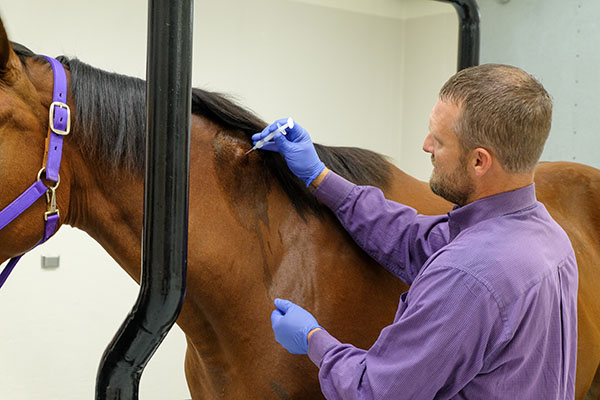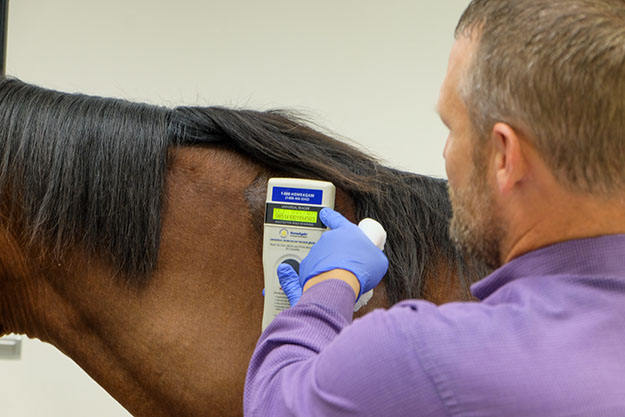Equine Medical Center
Microchipping
Veterinarians began microchipping dogs and cats approximately 30 years ago as a means of permanent identification. This trend has continued to expand and has begun to include horses. The microchip used to identify your pet is the size of a grain of rice and is etched with a unique number and encapsulated in glass. The chip is inserted with a syringe into the nuchal ligament of your horse, about half way down the neck on the left side. The procedure is simple, inexpensive and performed without sedation, just like any other injection. The chip itself is then identified by a hand-held radio-frequency scanner, which then reads the number. To date, it appears that microchips function for 25 years or longer.

|

|

Once the microchip has been placed, your horse is permanently identified. There are numerous registries which exist in order to register your horse and their ID number. Using the microchip number, it can then be retrieved to help locate the horse and/or establish their identity and your ownership if the two of you are ever separated by crime, accident or natural disaster. Because a microchip (unlike a brand or tattoo) cannot be altered once in place, electronic ID can provide decisive proof of identity even if a horse's physical appearance has been changed.